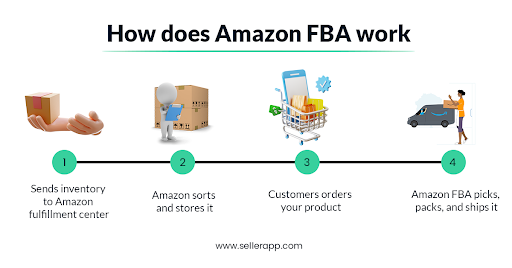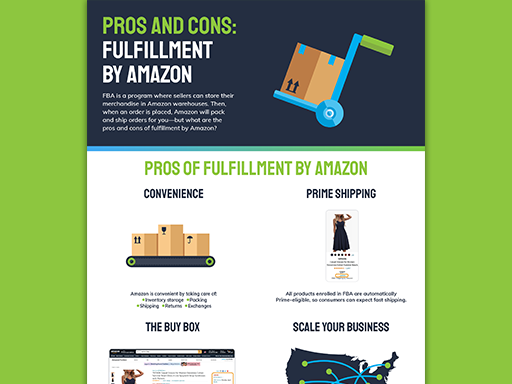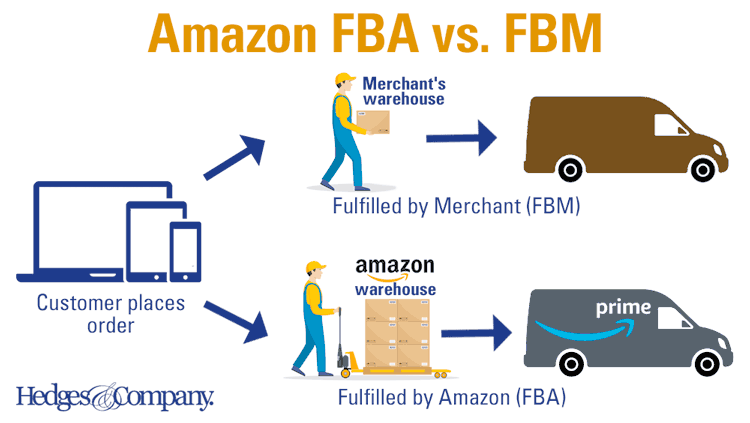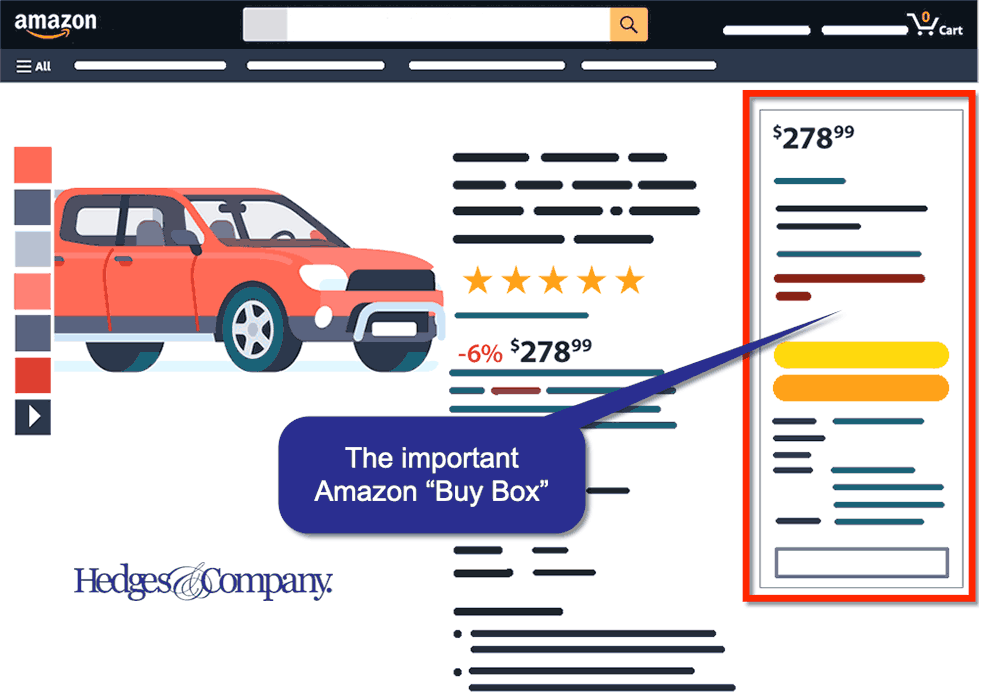Are you tired of confusing Amazon FBA fees? Unlock the secrets to navigating them effortlessly with our simple guide.
Table of Contents
- Introduction to Amazon FBA
- What Are Amazon FBA Fees?
- How Amazon Calculates FBA Fees
- Breaking Down the Different Types of Fees
- Costs That Affect Amazon FBA Fees
- Reducing Amazon FBA Fees Tips
- Misconceptions About Amazon FBA Fees
- Success Stories: Managing FBA Fees Effectively
- Conclusion: Navigating Amazon FBA Fees
- Frequently Asked Questions (FAQs)
Introduction to Amazon FBA
Have you ever wondered how people sell things online and get them delivered to your doorstep? Well, that’s where Amazon’s Fulfilled by Amazon (FBA) service comes in. Let’s dive into what Amazon FBA is and how it helps people run their online businesses.
Amazon FBA is like having your own personal team of helpers who take care of storing your products, packing them up, and shipping them out to customers. It’s kind of like having your own mini Amazon warehouse to manage your online store without all the hassle of doing it yourself. Pretty cool, right?
People who have items to sell but don’t want to deal with the nitty-gritty details of packing and shipping can use Amazon FBA to make their online businesses run smoothly. It’s a handy service that takes the stress out of managing an online store, letting sellers focus on finding cool products to offer to customers like you!
What Are Amazon FBA Fees?
When you sell things through Amazon’s Fulfilled by Amazon (FBA) service, you need to understand the fees involved. So, what are Amazon FBA fees and why are they important? Let’s break it down for you.
The Basics of FBA Fees
Amazon charges fees for various services they provide to sellers. These may include fees for storing your products in their warehouses, picking, packing, and shipping your items to customers, and other fees that might apply based on your specific situation.
Why Sellers Pay These Fees
Amazon charges these fees to cover the cost of services like storage, shipping, and customer service support. In return, sellers get the benefit of not having to worry about these aspects of their business, allowing them to focus on other important tasks.
How Amazon Calculates FBA Fees
When you sell your items using Amazon’s FBA service, you need to understand how Amazon calculates the fees you’ll have to pay. Let’s break it down in simple terms.

Image courtesy of via Google Images
The Role of the FBA Calculator
The Amazon FBA calculator is like a magical tool that helps sellers estimate the fees they’ll incur before deciding to list their product on Amazon. It considers factors like size, weight, category, and other details to give sellers a clear picture of potential costs.
Using the Calculator Correctly
For sellers to get accurate fee estimates, they must input the correct information into the FBA calculator. This includes the weight and dimensions of the product, the selling price, and other relevant details. By using the calculator correctly, sellers can make informed decisions about their products.
Breaking Down the Different Types of Fees
When it comes to selling items on Amazon using their Fulfilled by Amazon (FBA) service, there are various types of fees that sellers need to be aware of. Let’s dive into the specific types of fees that make up the total FBA fees in a way that’s easy for children to understand.
Fulfillment Fees
First off, we have fulfillment fees. These are the charges for Amazon to pick, pack, and ship your product to the customer. Think of it as the cost for Amazon handling all the work to get your item to the buyer’s doorstep.
Monthly Inventory Storage Fees
Next, there are monthly inventory storage fees. This is the cost of storing your items in Amazon’s warehouse each month. The longer your products take up space in the warehouse, the more you may need to pay in storage fees.
Long-term Storage Fees
If your items stay in Amazon’s warehouse for a long time, you might incur long-term storage fees on top of the regular monthly storage fees. This fee acts as an incentive for sellers to keep their inventory moving.
Removal Order Fees
There’s also the removal order fee, which is related to getting items returned or disposed of from the Amazon warehouse. If you need to take back or get rid of your products, this fee comes into play.
Referral Fees
Lastly, we have referral fees. This is the fee Amazon charges for selling items through its platform. It’s like a commission for using Amazon’s vast customer base to sell your products.
Costs That Affect Amazon FBA Fees
When using Amazon’s Fulfilled by Amazon (FBA) service, the total fees you need to pay can vary based on several factors. Let’s take a closer look at some costs that can impact the amount of FBA fees a seller needs to pay.

Image courtesy of via Google Images
Item Size and Weight
The size and weight of the items you sell through FBA can have a significant impact on the fees you’ll be charged. Larger and heavier items generally require more resources for storage and shipping, which can result in higher fees. It’s essential to consider the dimensions of your products when calculating potential FBA costs.
| Fee Type | Description |
|---|---|
| Fulfillment Fee | A fee Amazon charges for picking, packing, shipping, and providing customer service for your products. |
| Referral Fee | A percentage of the total sale price that Amazon takes as a commission for selling your product on their platform. |
| Storage Fee | A fee for storing your products in Amazon’s fulfillment centers. Calculated based on size and time stored. |
| Long-Term Storage Fee | A fee for products that have been stored in Amazon’s fulfillment centers for an extended period of time. |
| Removal Fee | A fee for having Amazon remove your inventory from their fulfillment centers. |
Product Categories
Different product categories may have varying fee structures on Amazon. For instance, items like electronics, which may require special handling or have higher return rates, could incur higher fees compared to clothing items. Understanding the fee structures for different categories can help you make informed decisions about what to sell through FBA.
Seasonal Fluctuations
During peak seasons like the holidays, Amazon experiences a surge in orders and shipments, which can impact FBA fees. Sellers may need to account for potential increases in fulfillment and storage fees during busy times of the year. By planning ahead and adjusting strategies for seasonal fluctuations, sellers can better manage their costs on the platform.
Reducing Amazon FBA Fees Tips
One way to potentially lower your Amazon FBA fees is by optimizing your product sizing. This means being smart about how you package your items for shipment. By reducing unnecessary packaging and using smaller boxes, you can save on storage and shipping costs. Think about how you can make your products more compact and efficient without compromising their safety.
Monitor Inventory Closely
Keeping a close eye on your inventory can also help you reduce FBA fees. Amazon charges additional fees for items that stay in their warehouse for an extended period. By regularly checking your inventory levels and making sure to sell through your products in a timely manner, you can avoid incurring long-term storage fees. Stay on top of your stock and plan promotions or discounts to move inventory quickly.
Select Your Product Carefully
When choosing which products to sell through Amazon FBA, consider the fees associated with each item. Some products may have higher fulfillment or storage fees due to their size, weight, or category. By selecting products with lower fees or higher profit margins, you can maximize your earnings and minimize your expenses. Research different product options and analyze the potential fees before making a decision.
Misconceptions About Amazon FBA Fees
Some people might think that Amazon FBA fees are too complicated to understand. However, with the help of tools like the Amazon FBA fee calculator and valuable information available, anyone can grasp how these fees work. By breaking down the different types of fees and explaining them clearly, sellers can navigate through the complexities with ease.

Image courtesy of via Google Images
Only Large Sellers Pay A Lot of Fees
It’s a common misconception that only big sellers have to deal with hefty Amazon FBA fees. The truth is that fees vary based on multiple factors, such as the type of product, size and weight of items, and storage duration. Smaller sellers can still succeed in managing their FBA fees effectively by understanding these variables and making informed decisions.
Success Stories: Managing FBA Fees Effectively
Running a successful business on Amazon using the Fulfilled by Amazon (FBA) service requires smart management of the various fees associated with it. Let’s take a look at some inspiring success stories of sellers who have effectively navigated and controlled their FBA fees to prosper in their businesses.
Case Study Highlights
One seller, Sarah, found that optimizing her product sizing was a game-changer in reducing fulfillment fees. By adjusting the packaging of her products to be more compact, she was able to save on storage and shipping costs, increasing her profit margins significantly. Sarah’s story highlights the importance of paying attention to the little details that can make a big difference in managing FBA fees.
Another seller, Alex, learned the hard way about the impact of long-term storage fees. After realizing that some of his items were not selling as quickly as he had hoped, he made a concerted effort to monitor his inventory closely and avoid incurring additional charges. By staying on top of his stock levels and disposing of slow-moving items before they accrued long-term storage fees, Alex was able to maintain a healthy bottom line and grow his business steadily.
These success stories demonstrate that with strategic planning, careful monitoring, and proactive decision-making, sellers can effectively manage their FBA fees and build profitable businesses on Amazon. By implementing cost-saving measures and staying informed about fee structures, sellers can set themselves up for long-term success in the competitive e-commerce marketplace.
Conclusion: Navigating Amazon FBA Fees
In conclusion, understanding and managing Amazon FBA fees is essential for running a successful business on the platform. By grasping the different types of fees involved, knowing how they are calculated, and being aware of factors that can affect these expenses, sellers can optimize their strategies to minimize costs and maximize profits.

Image courtesy of via Google Images
It’s crucial for sellers to utilize tools like the Amazon FBA fee calculator to estimate potential fees accurately before deciding to list a product. By carefully monitoring inventory, optimizing product sizing, and selecting items strategically, sellers can work towards reducing their FBA fees and increasing their bottom line.
While navigating Amazon FBA fees may seem complex at first, with the right knowledge and guidance, sellers can successfully manage these costs and build a profitable business on the platform. By debunking common misconceptions and learning from success stories of other sellers, it becomes clear that with dedication and smart planning, anyone can thrive in the world of Amazon FBA.
Frequently Asked Questions (FAQs)
What is Amazon FBA?
Amazon FBA, short for Fulfilled by Amazon, is a service that helps people sell their items online. Instead of handling shipping and customer service on their own, sellers send their products to Amazon, which takes care of storage, packing, shipping, and customer inquiries.
Why are there so many different fees?
Amazon charges various fees to cover the cost of the services it provides through FBA. These fees include storage fees for keeping items in Amazon’s warehouses, fulfillment fees for picking, packing, and shipping orders, and referral fees for selling items on Amazon’s platform. Each fee ensures that sellers have access to Amazon’s infrastructure and services to reach a wider audience.
Can you really make money with all these fees?
Absolutely! Many sellers have built successful and profitable businesses using Amazon FBA, even with the fees involved. By understanding how these fees work, optimizing product choices, monitoring inventory closely, and managing costs effectively, sellers can create a lucrative business on Amazon’s platform. With the right strategies and dedication, sellers can indeed make money with Amazon FBA.
